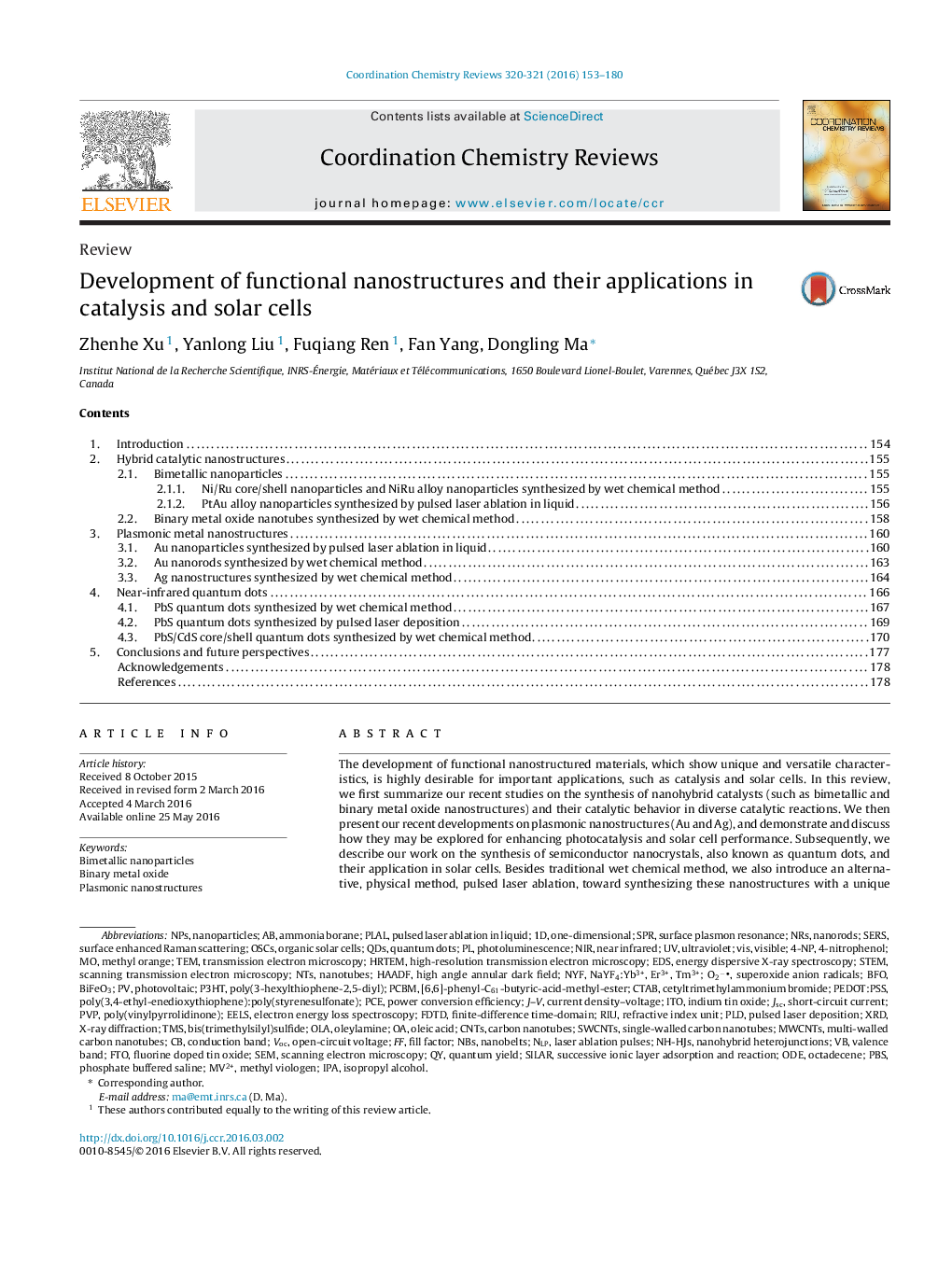| Article ID | Journal | Published Year | Pages | File Type |
|---|---|---|---|---|
| 1299465 | Coordination Chemistry Reviews | 2016 | 28 Pages |
•Bimetallic and binary metal oxide nanostructures show improved catalytic activity.•Plasmonic nanostructures can enhance photocatalysis and solar cell performance.•Near infrared quantum dots hold high potential for solar cell applications.
The development of functional nanostructured materials, which show unique and versatile characteristics, is highly desirable for important applications, such as catalysis and solar cells. In this review, we first summarize our recent studies on the synthesis of nanohybrid catalysts (such as bimetallic and binary metal oxide nanostructures) and their catalytic behavior in diverse catalytic reactions. We then present our recent developments on plasmonic nanostructures (Au and Ag), and demonstrate and discuss how they may be explored for enhancing photocatalysis and solar cell performance. Subsequently, we describe our work on the synthesis of semiconductor nanocrystals, also known as quantum dots, and their application in solar cells. Besides traditional wet chemical method, we also introduce an alternative, physical method, pulsed laser ablation, toward synthesizing these nanostructures with a unique “bare and clean” surface, highly relevant to catalytic, plasmonic and photovoltaic applications. Finally, perspectives on future advances of nanostructured catalytic and plasmonic materials as well as quantum dots are outlined.
Graphical abstractThe syntheses and properties of various nanostructures, i.e., bimetallic and binary metal oxide nanostructures, plasmonic nanostructures and near-infrared quantum dots, are presented in this review. Their applications in catalysis and solar cells are also described and discussed. Figure optionsDownload full-size imageDownload high-quality image (193 K)Download as PowerPoint slide
